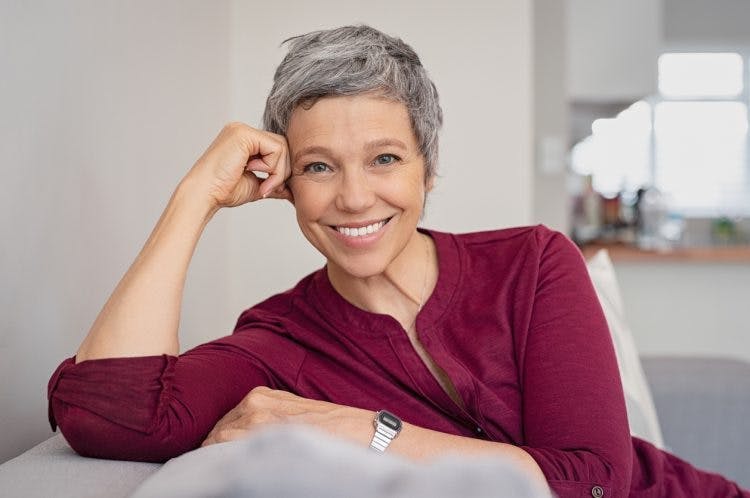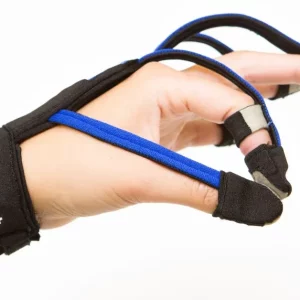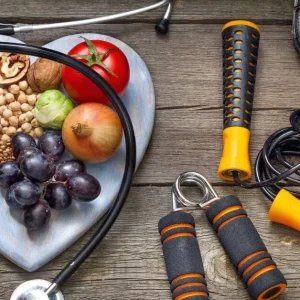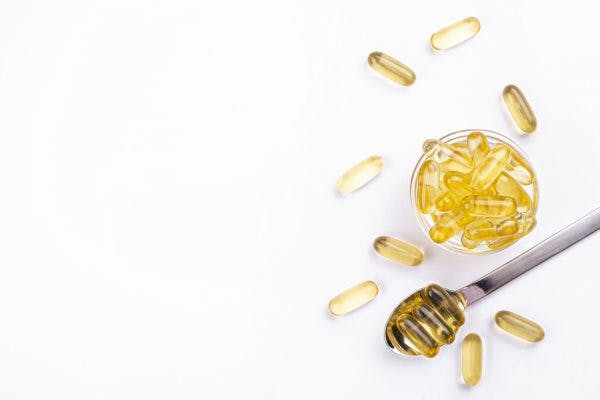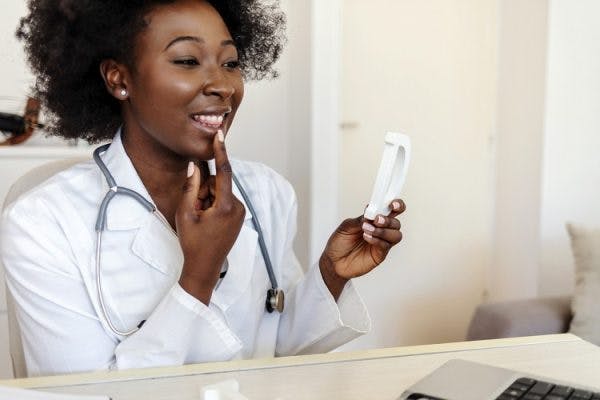A stroke is a challenging, life-altering event — and many survivors or caregivers find themselves wondering what to do after a stroke. Simply put, the stroke recover process isn’t so simple. This makes education a crucial first step towards healing and recovery.
Survivors can experience a wide array of secondary effects depending on the type of stroke and the area of the brain affected. For this reason, it is vital to work closely with your doctors and therapy team to stay informed and create an effective recovery plan.
To assist you on the road to recovery, this article will help you better understand what to do after a stroke. We will review different questions you can ask your providers as well as tips to boost your recovery and reduce the risk of a second stroke. We hope we can provide clarity and confidence for stroke survivors and their caregivers through education.
Questions to Ask the Experts After a Stroke
Immediately after a stroke, emergency medical treatment is necessary to stabilize your medical condition. Once a survivor is medically stable, rehabilitation begins. During the initial time in the hospital, a team of therapy specialists will start the rehabilitation process to help survivors regain lost function.
This is the time to educate and empower yourself by asking the available specialists any questions you may have. Educating yourself is your greatest tool and will allow you to better understand what to do after a stroke.
Questions for your medical team:
- What part of my brain was impacted by the stroke?
To start, ask your neurologist which area of the brain was affected by the stroke. For example, if the stroke affected the language center of the brain, you may experience speech difficulties like aphasia. Or, if the motor cortex was affected, survivors may experience physical challenges like paralysis after stroke. - Where should I go when I leave the hospital?
Your rehabilitation team generally consists of your hospital doctor, physical therapist, occupational therapist, and speech therapist, as well as a social worker. They will work together to provide options for your best care after discharge from the hospital. They will likely recommend additional care in one of the following settings:- inpatient rehabilitation: 3 hours of intensive therapy per day
- skilled nursing facility: usually an hour or two of therapy each day
- home health: therapy a few times per week in your home
- outpatient rehabilitation: clinic-based therapy sessions
- Do I need to make any dietary changes?
Healthy dietary choices improve your body’s ability to heal and provide energy for the recovery process. A dietitian can provide education and personalized dietary advice, suggesting foods that are known to help stroke recovery. Additionally, some survivors may have difficulty swallowing after a stroke. Ask your speech therapist about recommended foods and skills to practice to safely improve your swallowing abilities.
This list is far from complete, so don’t be afraid to ask any other questions you may have. Your healthcare team is there to help, and it is better to ask than not know. Try writing down any questions you think of so you can remember them when you talk with your doctor or other healthcare staff.
Aside from asking critical questions, there are additional steps you can take to continue the recovery process when you leave the hospital. In the next section, we will review our best tips on what to do after a stroke.
Tips on What to Do After a Stroke
There is no one-size-fits-all approach to stroke recovery. Every survivor is unique and so is every stroke. Therefore, everyone’s journey will look different, and it will take time to figure out what works best for you. To help you find your rhythm, let’s review 8 tips on what to do after a stroke.
1. Therapy, therapy, therapy!
Dedicated rehabilitative exercise is one of the most important pieces of the stroke recovery puzzle. Since survivors often experience physical and/or cognitive impairments after stroke, such as memory difficulties, hemiplegia or hemiparesis, rehab is crucial. Your physical, occupational, and speech therapists will provide exercise guidance to help you recover from your specific secondary effects.
Often, spontaneous recovery is responsible for rapid gains in function during the first 3-6 months after stroke. This means that the brain is naturally healing itself through the process of neuroplasticity. Neuroplasticity can be increased with targeted attention to affected functions and high repetition of the rehab exercises provided by your therapy team.
It’s important to take advantage of the initial enhanced “recovery window” by actively participating in physical, occupational, and speech therapy programs. However, improvements can continue after this stage, well into the chronic phase of recovery.
See a list of 12 rehab exercises you can do at home »
2. Inpatient rehabilitation
After discharge from the hospital, survivors generally transfer to one of three places: a skilled nursing facility, an inpatient rehab facility, or their home. This decision is based on the survivor’s current and pre-stroke level of function, rehab potential, and living situation. To qualify for inpatient rehabilitation, an individual must be able to participate in at least 3 hours of therapy a day. Otherwise, they can transfer to a skilled nursing facility to gain the strength required to tolerate additional hours of therapy.
The benefits of inpatient therapy are unparalleled, and this is a valuable tool to help survivors regain function after stroke. Researchers conclude that targeted intensive therapy, which is the focus of inpatient rehabilitation, is one of the reasons stroke survivors may recover more during the first 3 months after stroke. This intensive therapy allows survivors to capitalize on spontaneous recovery and this period of heightened rewiring in the brain.
If you or your loved one can actively participate in inpatient therapy, do your best to pursue this option. It will send a message that you want to take charge of your recovery. The gains you make in inpatient rehab will make a difference in your independence, daily activities, and quality of life.
3. Reduce your risk of a second stroke
During the first 3 months after stroke, research shows that 7.8% of survivors may experience a second stroke. . Therefore, it’s important to know the warning signs of stroke. These can include facial drooping, arm weakness, slurred speech, vertigo, sudden dizziness, changes in vision, or a severe headache. Education and awareness of these warning signs are crucial for timely treatment if another stroke occurs.
Understanding the warning signs of a stroke is a step in the right direction but taking action toward prevention is just as important. Some stroke risk factors are uncontrollable, like heredity or age. However, many stroke risk factors are manageable through certain lifestyle changes.
For example, high blood pressure and atherosclerosis (hardening of the arteries) can be improved with a healthy diet. Making healthy changes, such as adopting the Mediterranean diet, can decrease your risk of stroke. Additionally, daily exercise is an excellent way to reduce cardiovascular risk.
4. Embrace your unique journey
“Every stroke is different.” You’ll hear this saying often during the recovery process because the brain is extremely complex. As we discussed earlier, the secondary effects of stroke vary greatly from person to person, with some experiencing primarily physical effects of stroke while others may struggle with language, cognition, or emotional regulation. As a result, every person will recover at a different pace and have a different stroke recovery timeline.
A survivor’s level of recovery is based on multiple factors, including age, general health, amount of support from others, belief in recovery, and dedication to a targeted exercise program. This is why it is critical to work closely with your team of experts from the first day of recovery. They can help you understand your unique side effects and tailor your recovery plan accordingly.
While knowing that every journey is different may not help you know exactly what to do after a stroke, it does provide the freedom to follow your own unique path. Continue to research various stroke rehabilitation techniques to find the ones that work best for you.
5. Modify your home to help prevent falls
Another important thing to do after a stroke is to ask an occupational therapist to complete a home evaluation. They can provide expert home modification recommendations to maximize your safety and independence. This will allow you to participate in your hobbies or activities of daily living with greater confidence.
For example, your therapists may recommend safety precautions like installing grab bars and handrails, adding non-slip mats to the shower, and removing rugs or other tripping hazards. Your therapists can suggest additional adaptive equipment to help with activities in your home as well as exercise equipment to use with your home program.
6. Keep up with your rehab exercises
One of the most important things to do after a stroke — and never stop doing until you’ve reached your fullest recovery — is rehabilitative exercise. Repetitively practicing targeted exercises helps rewire the brain and improve function long-term. When patients fail to practice their exercises, their motor and cognitive skills may deteriorate and they will likely experience a regression in function after stroke. To avoid backsliding, keep up with rehab consistently.
After discharge from inpatient therapy, therapists usually send patients home with a written sheet of exercises to do on their own. These exercise programs generally contain valuable exercises but often have low compliance rates. In many cases, this means patients are not getting adequate practice at home to promote adaptive changes in the brain necessary for recovery.
This is where home therapy tools can help fill in the gap. Devices like Flint Rehab’s FitMi home therapy or the CT Speech and Cognitive Therapy App can help motivate survivors to participate in high repetitions of daily exercises. As a result, many survivors see improvement within weeks of using the device.
See reviews for FitMi home therapy »
7. Prioritize mental health
Another type of therapy that often goes overlooked is psychotherapy, or “talk therapy.” Many stroke survivors struggle with depression and anxiety for a variety of reasons. Sometimes this is because of physical changes in the brain, such as a basal ganglia stroke. Other reasons include changes in independence, financial strain, fear of another stroke, or post-stroke grief.
Depression and anxiety can also decrease your motivation to work toward recovery. This is why psychological care is important for a holistic approach to stroke recovery, and can help you get back to enjoying the activities you love.
8. Join a support group (for survivors and caregivers)
Self-care is essential for both survivors and their caregivers, and joining a support group can be a great step toward prioritizing mental health. Support groups provide fellowship with other stroke survivors and family members/caregivers who understand exactly what you’re going through. A support group can offer suggestions, resources, social opportunities, and friendship. Support groups are available through the ASA’s support group finder. If you can’t find any in your area, you can also join an online group.
What Not to Do After a Stroke
While it is essential to know what to do after a stroke, it is also important to know what not to do after a stroke. Although it may be tempting for some survivors to rely on their intact functions to participate in day to day activities, it is vital not to neglect using their affected functions.
Rather, survivors should try to use the functions affected by stroke as much as possible. Like the saying, “use it or lose it”, avoiding use of functions affected by stroke may cause further decline in those areas.
For example, individuals with left-sided hemiparesis (weakness) may find it easiest to simply avoid using their left arm. However, doing so not only slows recovery, but also can lead to further deterioration of strength and mobility in the left arm. This is referred to as learned non-use. Alternatively, by focusing on using their left arm as much as possible during exercises and everyday tasks, individuals can optimize their recovery.
Therefore, to prevent learned nonuse, it is important not to forget to use the skills affected by stroke as much as possible. Since repetitive practice is key to recovering after a stroke, intentionally practicing affected functions during everyday tasks can maximize improvement.
Knowing What to Do After a Stroke
After experiencing a stroke, you may be left wondering what steps to take next and how to achieve the best recovery. While there isn’t a perfect roadmap for stroke rehabilitation, there are resources available to help you make educated decisions. Ask questions and rely on your healthcare team as you navigate the post-stroke journey. They can explain your available options and help you decide on your next steps.
There are many things you can do after a stroke to maximize your outcome. This includes participating in inpatient rehabilitation, staying consistent with your rehab exercises, and modifying your home to increase your safety. Additionally, it is important to prioritize mental health and practice healthy habits to reduce your risk of a second stroke.
Once you have an idea of what to do after a stroke, take action. The different tips we’ve discussed in this article can help you take steps to ensure the highest recovery possible for you or your loved one. Above all else, set motivating goals and stay dedicated to a consistent rehabilitation program.

